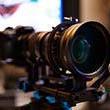Leaderboard
Popular Content
Showing content with the highest reputation on 02/14/2015 in all areas
-
Samsung NX1 vs Canon C300
Ivar Kristjan Ivarsson and one other reacted to Tim Naylor for a topic
Well put. I come to this site because I learn things about small and inexpensive cameras that we don't regularly test or use on set. Last week I shot an AMEX commercial with an F55 but we also used a BMCPC as well for a different look. Much of the info on that cam came from sites like this. For the past month, I'm on a TV show where we use Amira's all day but guess what, we also break out the A7s and Go Pros from time to time. Again this site and several others help pros get a handle on emerging tech. I'm actually considering shooting my next feature on A7s (even though we have the choice of Arri's). While I do think we sometimes over analyze specs here and not just look at what great pics a camera makes, I find this site at the forefront of smaller, lighter and more versatile tech. Any pro who ignores these things will be left one day wondering why the phone stopped ringing.2 points -
They're bloody well made - solid enough to hold my Iscoramas They're also less common as a set than Zeiss and Leicas, which local DPs have in abundance near me. Plus they're characterful and cheap, and reasonably consistent. I've got a wide range of Helios, Tair, Zenit bla bla blas that make a 'set', but they're very wacky, and not consistent at all. Cameras are for christmas, Lenses are for life.2 points
-

The FM lounge (Discussion of anything not related to FM price and discount)
Cosimo murgolo and one other reacted to dwijip for a topic
I'm wishing for the 4K photo hdmi out and a slog profile, but oh well, we will see2 points -
You can buy ND filters that work better then the in camera ones for very little i use one all the time and can dial it in to what i want as i shoot or take it off, The NX1 is quite good in low light only one i can think of that is better is the Sony A7S that you need another $2000 to be able to record 4K with and still ND filters and XLR., A XLR adapter is only $ 200 to $300. DR dose not seems to be a problem with the NX1 at all. Rolling shutter can be a problem but it is a problem with other cameras as well in 4k and in HD it is not much of a problem at all. So for $400 you can out fit the NX1 with ND filter and XLR. and buy two of this setup for less or. Buy one of this set up and buy the Pocket version that will be out soon as a second camera and a smaller lower cost Gimble for it and more lens all for less then what you would pay for that $4500 so you would be able to shoot two cameras and have a gimble and more lens or more lights. That is the direction i am going in. Plus your image quality will be better. And your auto focus when you ever want to use it will be better. The Samsung 16x50 F 2 to 2.8 lens is a very sharp lens and gives you image stabilizing in video that work well, auto focus and focus on and off so you can punch in focus using the camera in a split second then lock that focus much faster then doing it manual or you can do it manual if you need to do a smooth focus from one item to another. Focus peaking also works very good when manual focusing a Samsung lens or other brand lens with adapter on it. It focus so well i sent back the Fallow focus set up i had got for a refund. Touch focus on the back screen and it will focus on anything you touch on very good for product or in studio shooting or a live event you need to focus on different things fast it is like having hard stops but on anything you want at any time. You can touch focus and then press a manual focus on to lock that focus in. Lots of cool things this camera can do people do not talk about. You could have the camera on a tripod and be shooting a band or anything and touch focus on any member at any time as you wish with no manual focus needed. The auto focus for flowing a person walking is quite good even with them coming at you. When you want to lock focus on something it is so easy letting the camera do the focus and then locking that focus over doing it manual you can go from one item to the next auto focus lock focus very fast this would be very hard to do manual. Only down side is the file converting time but you get used to it. I have recorded well over 100 hours now with it. Battery life is ok to.1 point
-
Yeah right, we get it. This is a videography forum. F*ck those who might be interested in a camera that shoots very decent full frame video and takes pretty awesome stills.1 point
-
Moire Removal / Lessening
Brian Luce reacted to Axel for a topic
Working out how to avoid it. How best? By doing the contrary first, by learning how to produce moire. A lot of factors contribute to that, but in the end it all boils down to the resolution of patterns. So the obvious answer is looking for patterns. The lens is capable (sharp enough) to depict smaller picture elements (google >circle of confusion) than the pixel grid on the sensor, never the other way around. This reduces the actual resolution drastically. If you additionally allow any in-camera sharpening, the aliasing stays the same, but the moire will pop out more (software solutions as shown above affect only this, they can only soften the existing aliasing, imo not worth the trouble/money). There are filters you can put in front of the sensor (> OLPF) that will tune the spatial frequency. They will eliminate moire. But they are expensive and they have to be made specifically for your camera. However, during your deliberate chase of moire patterns you will notice that with one too sharp lens you will only be able to produce moire under certain conditions. 1. The most important is the spatial frequency of the lens, which alters depending on the aperture you chose. For just about every lens there are test charts that show this correlation in a graph. As a rule of thumb: At open aperture, the lens usually performs 'worse'. You should learn to find the aperture range that allows moire with your combo! NOTE: With some lenses, choosing an inappropriate aperture alone makes moire disappear (which is not what we intend), 2. The pattern needs a certain contrast. As we all know, contrast is highest on a sunny day at noon and lowest in a dimly lit cellar. So you need to avoid wide apertures in bright light. If you are after moire, stay away from ND filters! By understanding those two conditions, you will capture 90% of all moire that's achievable. The third condition is the relative size of the pattern itself. Whereas the first two factors are easy to manage, this one really restricts your options regarding framing, focal lengths or choice of motifs in the first place. A pain in the ass. But in reality, it's actually pretty easy to instantly recognize promising patterns. And then, all together now: 1. Turn up in-camera sharpening (this embosses otherwise barely noticeable moire and bakes it into the image, best advice!) 2. Find the aperture at which your lens performs best (also depends on focal length with zooms) 3. Change your position during shooting ever so slightly. Doesn't need much practice, you'll know intuitively pretty soon, it actually doesn't limit your choices. 4. Don't be afraid of moire-free images! Cameras with very high moire efficiency are around for almost one decade now. It's lunacy, but many filmmakers actually at some day lost their skills to capture moire. Cinema features have been released shot with those cameras, and nobody complained about missing rainbows. People got used to the clean images, so don't worry.1 point -
Complete Set of "Character Lenses?"
IronFilm reacted to shanebrutal for a topic
Regarding the rollei qbm's is there an easy way to distinguish hft coat vs non coated? I haven't heard much of these lenses and what i'm seeing on ebay it's hard for me to tell which ones are which.1 point -

Samsung NX1 vs Canon C300
estarkey7 reacted to Andrew Reid for a topic
Listening is one thing, listening to the right people is even more important. That's why it's great enthusiast / power-user suggestions seem to be going into the firmware. These are the right people to ask.1 point -

The FM lounge (Discussion of anything not related to FM price and discount)
Cosimo murgolo reacted to nahua for a topic
Yes you will need some sort of lens support. If you think it sags down now, wait awhile and see... I really wish Panasonic released a firmware patch for external monitoring in 4K photo mode. Really frustrating to shoot 3:2 or 4:3 with no monitor support.1 point -

Samsung NX1 firmware v1.21 up now
leeys reacted to Brian Luce for a topic
What? No RAW or 800 fps? Samsung sucks!1 point -

Complete Set of "Character Lenses?"
Amro Othman reacted to JaeM for a topic
Here's a set I'm slowly collecting / modifying. Pentax SMC Takumars: 17mm f424mm f3.535mm f250mm f1.4 - 7 element50mm f1.4 - 8 element55mm f1.885mm f1.8105mm f2.8135mm f2.5200mm f4I've de-clicked them, had 3d printed focus and aperture gears fitted and lightly grub screwed, shimmed them all for infinity focus with EOS adapters, and have 80mm fronts on all but the 17mm. Yes, they're a bit slow at either end, but with an A7s, plenty of fun to be had.1 point -
That A6000 autofocus is insanely fast... that'd be great for documentary. So at the moment, we know that over 60-odd FPS the GH4 softens and has more aliasing. This is in line with the FS700 as well, probably a better option than Red Epic's sensor cropping still. That audio pulsing is probably solvable by using a TRRS jack and sending the correct part to ground, so the pulsing signal doesn't oscillate the recorded sound. It probably doesn't make a huge difference, but still isn't great design, as you can't really bury it, it will always oscillate the audio recording (probably creating a harsh feel) unless it's defeated by grounding. Their own mics are TRSS connectors, and I'm sure they want you buy the YAGH too. A real design flaw is obsessing about 24p. why not 25p at full 4k? why no 100fps? It appears to be an artificial limitation.1 point
-

GH4: List of quirks and problems
JazzBox reacted to Andrew Reid for a topic
The sensor readout is much faster on the GH4, by 50%. But 400% more data coming off the sensor, that isn't enough to compensate. Audio issue is a non-issue as far as I'm concerned. Who shoots video with audio in stills mode? That's what the movie mode is for! AF is of no interest to me either. The soft video in VFR mode, well treat it as a creative bonus tool... You could pay $15k for a camera today, and not even get 60p! (C300)1 point


